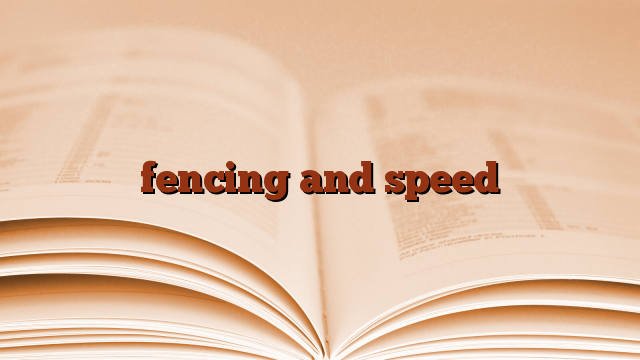Speed is a critical component of the skill of the modern competitive fencer. Although experience and tactical skill are still important, the general trend towards youth in sport, which has changed the dynamics of other sports, is also shaping fencing. This suggests that individuals in this sport need to consider how the components of speed interact when performing certain techniques in combat.
The physiological reaction time and tactically the time spent in the observe-orientate-decide-act loop largely determine how quickly the fencer can act in any tactical situation. You must be able to spot a threat or opportunity, choose the right action, and move your body to take the hit. There are actual physiological limits, in milliseconds, to how fast these steps can be performed. Experience can shorten these times, particularly in terms of recognition, but a fencer looking to maximize speed should remember that speed also results from at least six factors: heredity, technical excellence, techniques available, physical training, relaxation, distance and Intention.
Heredity determines your body structure and muscle fiber mix. In fencing, fast-twitch fibers are crucial. If you’re born with a preponderance of fast-twitch muscle fibers, you’ll be faster at short-duration explosive actions. If you have a preponderance of slow-twitch fibers, you’ll be slower but with better endurance. Regular exercise helps all of these fibers work at a higher level.
Technical excellence is an important part of speed. Techniques performed correctly are biomechanically efficient, move the blade the shortest distance, and are smooth in execution. The smoother and more controlled your attacks, saves, counterattacks, and footwork are, the faster you are.
The techniques available to you also affect speed. In general, the more techniques your brain has to sift through to find the answer, the slower your transition from identifying an opportunity to executing it. Obviously you need enough technical options to get your offense and defense working. However, the time spent developing low-paying promotions can result in a speed penalty.
Physical training contributes to speed by increasing core strength and balance, as well as the strength and work capacity of your muscles. Tailored resistance, speed and agility training programs that focus on movement patterns in fencing will make you faster.
Although it seems the opposite is true, the more relaxed you are, the faster you will be. To demonstrate this, try making a fist and creating as much muscle contraction in the arm as possible. Extend your arm with this resistance. Now shake your arm loose, relax and stretch it out. Yes, the relaxed extension is faster.
The ability to control distance is a key factor in speed. The shorter the distance your point has to move when attacking, the higher the perceived speed of the attack and the less time an opponent has to react. The longer the opponent’s attack has to be in motion, the slower it is and the better the chance of defeating it. This means that the combination of footwork, arm position and tactical flair is critical to speed down the strip.
After all, intent matters. If you don’t have a plan for your next touch, you’ll spend time figuring out when to leave. If you don’t believe in your action and aren’t ready to take it with enthusiasm, it will be hesitant and slow. To be fast, you need to know what you’re trying to do and be fully committed to the action.
Thanks to Walter Green | #fencing #speed

Leave a Reply